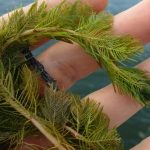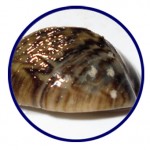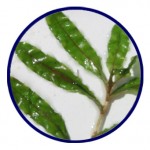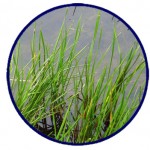PGOLID does a lot of work to prevent the spread of invasive species into and out of the lakes. We encourage our residents to follow the MN Invasive Species Laws, MN DNR.
Have concerns? See something suspicious? Call the DNR at 218-671-7930
PGOLID has an Rapid Response Plan, to be prepared for any new infestations.
Top Threats to PGOLID:
Starry Stonewort
Starry Stonewort is a rooted algae that spreads by starry shaped white bulbils. It can fill the water column disrupting boating, preventing spawning, and eliminating native plants. It is present in the Bemidji, Walker, and Brainerd nearby. People spread starry stonewort primarily through the movement of water-related equipment. Fragments can get tangled in trailers, motors, anchors and inside watercrafts (boats, canoes and kayaks). Small bulbils, which may be hidden in mud and debris, can stick to trailer bunks, anchors, ropes, fabric, footwear, as well as scuba, fishing and hunting gear. A small fragment or bulbil can start a new population.
MN DNR Starry Stonewort info page
Eurasian Watermilfoil
Eurasian watermilfoil looks similar to many native, beneficial watermilfoils found in Minnesota lakes and rivers. Its common native look-alike is northern watermilfoil. In comparison, northern watermilfoil has only five to nine leaflet pairs, the space between whorls is short, and it produces winter buds (dense club-like clusters of leaves at the end of the stem) at the end of the growing season. It is present in the Walker, Brainerd, and Alexandria areas nearby.
MN DNR Eurasian Watermilfoil info page
Established Invaders:
Zebra mussels
Zebra mussels were found in Pelican Lake in 2009. PGOLID monitors the distribution and density of both Zebra mussel adults and their microscopic larvae called veligers. See the links below for more information.
PGOLID Veliger Report 2012-2018
Zebra Mussel Fact Sheet, MN DNR
Curly-leaf pondweed
PGOLID started a Curly-leaf pondweed (CLP) treatment program in 2005. This project has shown a great reduction in CLP and is an ongoing project. A total of 28.5 acres were treated in Bass, Pelican and Little Pelican Lakes in 2017. In 2019 and 2020 very little CLP was found in the Pelican Group of Lakes. See the links below for more information.
Curly-leaf pondweed Fact Sheet, MN DNR
Flowering Rush
Flowering Rush is a problem in Detroit, Sallie and Melissa Lakes, which are upstream from Pelican Lake. Each summer, PGOLID hand-removes the Flowering rush in the Pelican River between Buck’s Mill and Little Pelican Lake to prevent it from spreading into the Pelican Lakes. This prevention program has been successful in stopping the downstream spread.

